Exhibition
Review by Rebekah Compton:
MYTHOLOGICAL EROTICA
at the Museo Argenti, Palazzo Pitti, Florence, Italy, October 2, 2005 - January
15, 2006
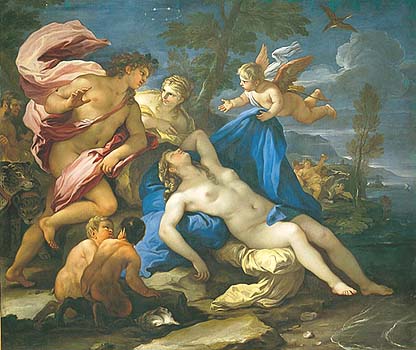
Fig. 1: Bacchus and
Ariadne (o/c, 203 x 246 cm., c. 1675 - 1680)
Luca Giordano (Museo di Castelvecchio, Verona)
Since antiquity, artists have been inspired by the seductive beauty of mythology, by its collusion of brutality and elegance and above all, by its expression of desire. The exhibition "Mythologica et Erotica: Arte e Cultura dall' antichità al XVIII secolo" at the Museo degli Argenti of the Palazzo Pitti, Florence reveals the power of myth to arouse and stimulate artists with a display of 214 highly provocative objects, created between antiquity and the eighteenth century. The exhibit presents a cornucopia of flesh, where gods and mortals kiss, caress, embrace, dance, chase, rape, and copulate. Florentine tourists who are awed by the heroic male nudes of Michelangelo and Bandinelli or touched by the endearing Holy Families of Fra Lippo Lippi and Raphael will be stunned by the stark nudity and libidinous sex flaunted and celebrated in this exhibit.
"Mythologica et Erotica" includes a number of artistic masterpieces, like Luca Giordano's Bacchus and Ariadne, 1675-1680 (Fig.1); however, its true brilliance lies in bringing together a wide range of artistic objects to reveal mythology's enchanting and delightful currency in visual culture. The curators Ornella Casazza and Riccardo Gennaioli are to be congratulated for obtaining a number of significant works from museums outside of Florence, particularly the antique pieces from the National Archaeological Museum in Naples. In addition to paintings, sculptures, and prints, the show includes precious objects like cameos, jewels, medals, and illuminated manuscripts as well as works usually classified as "decorative," such as tapestries, maiolica, vases, and furniture. Within the intimate six rooms, the interplay of colors, textures, and materials, which are enhanced by the soft but bright lighting, stimulate and excite the viewer. The eyes roam over voluptuous nude bodies in large-scale oil paintings, wonder at the tangible flesh of life-size marble statues, scrutinize the minute genitalia in intricately carved jewels, and decipher the entangled bodies in finely engraved prints.
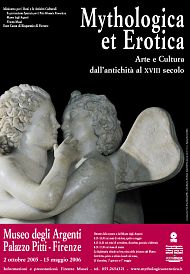
Mythologica et Erotica: Arte e
Cultura dall' antichita al XVIII secolo,
edited by Ornella Casazza and
Riccardo Gennaioli (Sillabe, Livorno,
2005, 35 Euros, ISBN: 88-8347-247-X
The curators have produced a beautiful
catalogue, Mythologica et Erotica: Arte e Cultura dall' antichita al XVIII
secolo, that includes twelve thoughtful essays on the proliferation of
mythology in different literary and artistic mediums. Ornella Casazza introduces
the show by discussing Renaissance rulers' symbolic appropriation of mythological
figures. Gianpiero Rosati and Mario Labate examine the classical literary
sources for the loves of the gods, revealing the delight readers found in
the sufferings of Olympian deities, whose desire and betrayal is analyzed
in the visual realm by Giovanni di Pasquale. Fabrizio Paolucci chronologically
surveys representations of Venus in Greek and Roman antiquity; however, an
almost exact version of his text appears in the Myth of Venus (2003)
catalogue of the Florentine sponsored exhibit in Cyprus. Exploring mythology
in the classical world, Ernesto de Carolis provides an informative discussion
of the style, function, and placement of Roman fresco painting, while Annamaria
Ciarello describes the ancient use of plants as remedies for impotence and
undesired pregnancies. Giovanna Lazzi bridges the gap between antiquity and
the Renaissance with a discussion of the symbolic valence of Eros in the fifteenth-century
illuminated manuscripts of Lorenzo de' Medici.
Ricardo Gennaioli provides an insightful
historical account of the production of gems from antiquity through the eighteenth
century, revealing their precious value, magical properties, and artistic
importance. Marzia Faietti traces the iconographical sources of some of the
show's prints by Marcantonio Raimondi, Gian Giacomo Caraglio, and Agostino
Carracci. As Faietti states, Bette Talvacchia completed the fundamental study
on I Modi and the spectatorship of pornography; however, an expanded
analysis of printed mythological erotica that considers the audience, production,
collection, and visual/ textual interplay of such works is much needed in
the field. Paola Buda discusses the patronage of Renaissance maiolica; however,
in her attempt to underline the connection, promoted by the exhibit, between
prints and ceramics, she repeats the material presented in almost all other
maiolica exhibition catalogues. Giuseppe Cantelli concludes the essays with
an enlightened discussion of the much-neglected field of Florentine Seicento
painting, highlighting the sentimentality and morbid theatricality of these
melodramatic images.
One imagines that the contributors to this catalogue sought to avoid the "Panofskian" notion of a rebirth of antiquity during the Renaissance by not discussing the sudden flourishing of mythological art during the fifteenth and sixteenth centuries and its connection to a rediscovery of ancient texts and objects, the rise of a court culture, the paragoni debates, and the new interest in the human body and its passions. However, an essay that re-addresses this topic in the light of current research and in the context of the objects displayed seems necessary in a show of this nature. Furthermore, it is rather disappointing that none of the catalogue contributors discuss the creation or reception of mythological erotica within the context of contemporary theories on gender and sexuality. Despite these weaknesses, the catalogue of objects is thorough, containing brief but substantial individual entries that follow the organization of the show from room to room.
The entrance to"Mythologica
et Erotica" consists of a foyer-like space graced with three grand
paintings of Love's protagonists, Venus, Eros and Anteros, whose potent arrows
inspire the desire, pleasure, joy, and envy of both gods and mortals. Michelangelo/Pontormo's
Venus and Cupid of 1533 hangs among these paintings, a work that was
the centerpiece of the Florentine Academy's groundbreaking show in 2002 and
that since its restoration has assumed a new relevancy in Florence and in
Renaissance scholarship.
Arousing representations of the
loves of the gods, which often take the form of human-animal coitus, adorn
the walls of the second sala. The exquisite Flavian fresco of Venus and
Mars from Pompeii reveals the prevalence of sensual myths within Roman
domestic spaces. Such scenes of amatory delight also flourished at the end
of the fifteenth century when wealthy patrons, like Lorenzo de' Medici, Isabella
d'Este, Alfonso d'Este, and Frederigo Gonzaga commissioned mythological works
for their private residences. These objects were intended for courtly recreation-for
intellectual conversation, for aesthetic beauty, or even for erotic stimulation.
The exhibit does not include the finest examples of mythological poesie
by artists like Botticelli, Mantegna, Titian, and Correggio, and only a hint
of their brilliance can be gained from works like Andrea Meldolla's Danae
of 1559 or Michele Tosini's Leda and the Swan of c.1565. However, the
curators do succeed in conveying the fascination of sixteenth-century artists
and patrons with divine adultery by displaying a number of colorful maiolica
pieces and fine engravings, which capture the violence of Neptune's rape of
Persephone, the intimacy of Giove's coition with Leda, and the absurdity of
Saturn's mounting of Philia.
Penetrating the entrance to the third sala, a giant Roman Lion Phallus complete with paws, a tail, and a chain of penis amulets stands as one of the strangest and most interesting objects in the exhibit. The viewer becomes a voyeur in this room of lascivious deeds, staring along with satyrs at the unadorned bodies of sleeping women and completing the positions of the only surviving fragments of Giulio Romano's and Marcantonio Raimondi's I Modi on loan from the British Museum. The stimulating influence of these prints throughout the sixteenth century can be seen in Paolo Fiammingo's Love in the Golden Age (Fig.2). Bacchus and his raucous band frolic about in high relief on sardonyx, jasper, chalcedony, and onyx. The display of such gems, which are usually confined to the upper floor of the Museo Argenti without labels or dates, raises important questions for scholars concerning the history of collecting, transmission of motifs, and modes of replication.
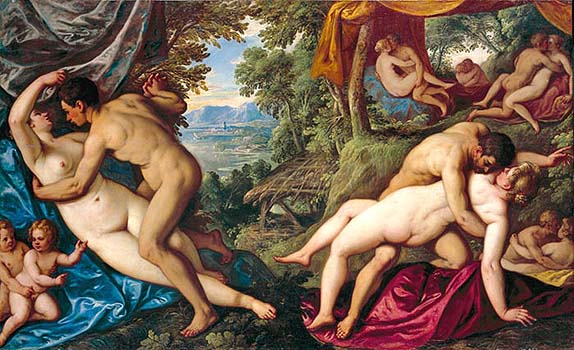
Fig. 2: Love in the Golden Age (o/c, 160 x 260 cm, c. 1540 - 1596)
Paolo Fiammingo (Kunsthistorisches Museum, Vienna)
In the next room, the curators have grouped together objects that portray mythological relationships outside the boundaries of "gender appropriate" heterosexual behavior. This room includes the rare pictorial subject of Hercules and Omphale with a sculptural group from the National Archaeological Museum of Naples that portrays the hyper-masculine demi-god wearing a chiton instead of a lion's skin and holding a spindle rather than a club. Francesco Albani's arousing portrayal of Salmacis Embracing Hermaphrodite, c.1633 conveys the power of female sexuality, while the graceful contrapposto of the Uffizi's Sleeping Hermaphrodite (Fig.3), which was restored specifically for the show, captures the tactile beauty of blended genders. The curators' decision to place objects depicting Giove's love for Ganymede and Apollo's desire for Hyacinthus and Cyparissus within this room serves to underline the homoerotic character of these relationships in a way not observed in either antiquity or the Renaissance. In the context of mythology, these tales always appear with the other loves of the gods, which are not distinguished by their homo/heterosexual nature.
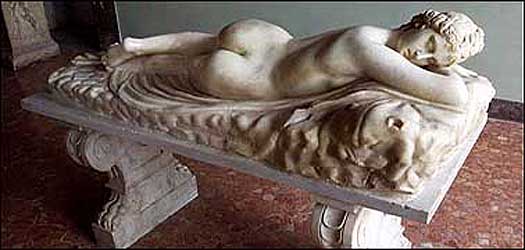
Fig. 3: Sleeping Hermaphrodite (Roman, 1st - 2nd century B.C., marble,
152 cm long,
antique part 68 cm. (Galleria degli Uffizi, Florence)
The show's fifth room celebrates the sensual qualities of water, particularly its association with nudity and pays homage to Venus and the Three Graces as the embodiments of Beauty, Love, and Pleasure. The awe-inspiring Triumph of Venus tapestry produced by the Gobelins Royal Manufactory, with loom weaving by Jan Jans the Younger (finished 1703) dominates this space with a size of 693 by 502 cm. The intricately woven pattern of putti, nymphs, sea creatures, garlands, and birds dazzles the mind, while the richly died threads of maroon, rose, turquoise, cream, and gold enchant the eye. The visual resonance of the tapestry highlights the importance of such "decorative" objects, which are often excluded from major exhibitions. A number of oil paintings, including Luca Cambiaso's Venus and Amore on the Sea, 1550-1570, Annibale Carracci's Venus, Satyr, and Amores, c.1588, and Livio Mehus's Toilette of Venus (Fig.4), c.1680-1690 offer stunning portrayals of the nude female body. The room contains seven representations of the Three Graces, which illustrate how different artists can creatively transform an antique prototype. The three nudes of the Pompeii fresco initiate an elegant dance with Il Poppi, intertwine in a loving embrace with Manetti, and await a voluptuous bath with Rubens.
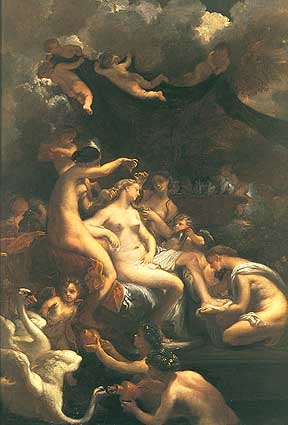
Fig. 4: The Toilette of Venus (o/c, 140 x 92 cm,
c. 1690 - 1690) Livio Mehus (Collection of Elena
Bigongiari, Florence)
The final room, which is actually to the right of the entrance foyer and really the second room of the show, imitates a camera or private bedroom, the usual abode of erotic art. A cassone and spalliere panels from the Quattrocento reveal the courtly, chivalric mode of mythological depiction that developed out of medieval narrative illustration. The illuminated manuscripts of Ovid, Pliny, Cicero, Plautus, and Virgil are significant for tying the visual imagery back to its literary roots and for presenting another medium where mythology flourished. The indulgent and inviting character of the entire show is conveyed best perhaps by this room's intricately carved bed and "recently" rumpled satin sheets.
--End--
Rebekah Tipping Compton is an advanced graduate student at the University of California, Berkeley, completing a PhD in Italian Renaissance art history. She received a MA from Washington University, St. Louis in 2001 and a BA from Clemson University in 1999. Her dissertation is entitled "A Cultural Icon: The Currency of Venus in Sixteenth-Century Florence." Currently, she is conducting research on a Fulbright Fellowship in Florence and Naples, Italy.